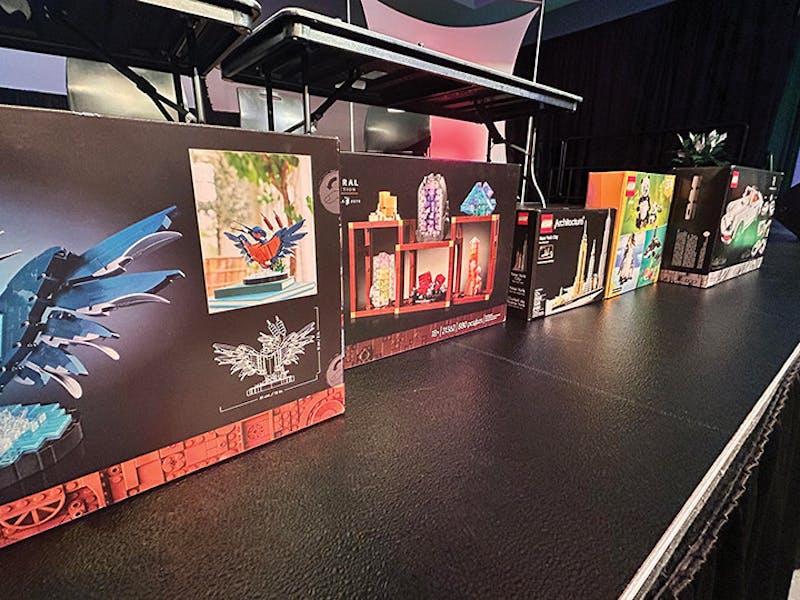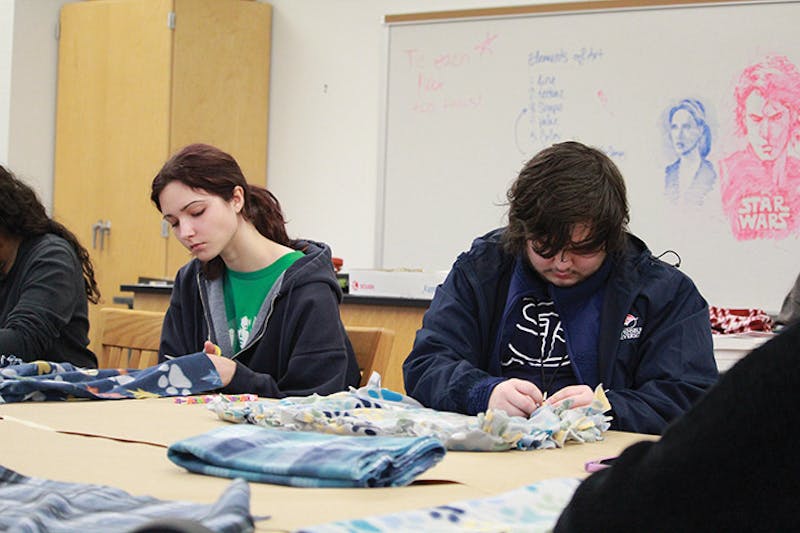Behind the scenes of a beehive, bees are busy at work filling their honeycombs with nectar and pollen, and in a chain reaction, our plates with a well-balanced diet. Almonds, apples, avocados, beans, carrots, coffee, cucumbers, grapes, strawberries, tomatoes and of course, honey — you can thank bees for all of that, and much more.
Without bees, we would be left with some staple foods, like potatoes, meats and grains, but we would still face famine, as many nutrient-rich foods would become hard to come by and skyrocket in price.
According to the United States Department of Agriculture (USDA), honeybee populations have declined nearly 44 percent since 1947 (2.63 million measured in 2018), and this is concerning because bees, especially honeybees, are more than just pests. European honeybees, a species of bees introduced to the U.S. in the 16th century, are busy bees and play a large part in pollination.
“At least 80 percent of flowering plants need pollinators to reproduce, and bees are the most important pollinators, at least in our area,” said Heather Sahli, a biology professor at Shippensburg University whose recent research focuses on how humans have affected habitats, pollinators and plant reproduction.
Without bees, the hardly manageable task of pollination would fall into our hands. This is already a reality in southwest China, where farmers have overused pesticides and herbicides, and eradicated most of the bee population.
“They’re already seeing problems with food production because they don’t have enough bees. And so, they’re sending people out into orchards to hand-pollinate,” said Claire Jantz, a backyard beekeeper and geography-earth science professor at SU. “We need to think about how we would produce food without bees before we get to a world where we don’t have bees.”
Knowing how to curb the bee decline begins with knowing what is causing it. Habitat destruction and diseases are two causes recognized by the USDA, but several backyard beekeepers in the Shippensburg area attribute the issue to climate change and the overuse of herbicides and pesticides, as seen in China.
Sahli said farms used to be floral resource providers for bees with weeds. Now, with modified crops that are immune to pesticides and herbicides, farmers can spray a whole field and kill all the weeds.
“And I understand from the farmer’s perspective that’s been helpful, but from the bee perspective, that’s been really detrimental,” Sahli said.
In addition to herbicides and pesticides reducing floral resources such as dandelion and clover, climate change is also contributing to a shift in blooms. Tim Hawkins, a professor of geography-earth science at SU who specializes in climatology and hydrology, has found that Pennsylvania has warmed about 1.5 degrees and heavy precipitation events have increased 71 percent in the last century.
“Climate models suggest that PA will continue to warm, and precipitation will increase,” Hawkins said.
“The degree of these future projected changes is a function of how much greenhouse gas pollution society emits in the coming decades.”
In her backyard beekeeping practices, Jantz has witnessed the effects of climate change as her bees have not survived the winter in five years.“I know I can’t link that directly to climate change, but at a broader scale, climate change is an issue of concern for beekeepers because of the increased variability,” says Jantz.
Bees not surviving winter is a struggle that more backyard beekeepers than Jantz has experienced. Janice Reed, a backyard beekeeper and SU faculty member, has not had a successful winter for several years.
“Many beekeepers that I talk to say beekeeping used to be easy — let the bees do their own thing and they will produce honey,” says Reed. “Those same beekeepers are saying they don’t know what the problem is, but beekeeping has become a full-time job.”
Despite backyard beekeeping becoming more challenging due to human-induced changes in the environment, the continued efforts of these beekeepers play a vital role in preserving what we have left of honeybees.
“If you’re an industrial-style beekeeper, where you have hundreds of hives, then you can’t pay attention to every one of your hives like we can as backyard beekeepers,” says Jantz. “Backyard beekeepers have an important role in kind of maintaining the honey bee population, because we can manage our bees more carefully. You just have a couple, so you take care of them.”
With hopes to start its own bee-saving initiative and to reach a higher level of pollination on campus, the Shippensburg University Farm introduced a beehive to its plot of land three years ago. The effects of the hive have already been seen on the campus farm in yield, and even in the community.
“I had a lady stop at the campus farm the first year we had the hive over there,” says Sean Cornell, a geography/earth science professor at SU who manages the campus farm’s beehive. “And she [said], ‘I was wondering where the bees were coming from in my garden. I’ve never had better vegetables. I’ve lived here for 15 years. This year I came out and there were all these bees in my garden. I was just driving around and then I saw the hive. I’m just so excited.’ And so the very next day I go back to the farm and there were all these tomato plants that were lined up with a note on them from her, and she [wrote], ‘I just wanted to say thank you.’”
Even though the number of honeybee colonies are declining, it is not too late for them to rebound, as experienced by SU. Jantz says becoming aware of the role that bees play in our daily life is the first step to saving them, because thinking about bees is more than thinking about the yellow and black striped insects, it is thinking about where our food comes from.
“I always like to tell my classes, think about our diet,” says Sahli. “What would we be left with without bees?”




The Slate welcomes thoughtful discussion on all of our stories, but please keep comments civil and on-topic. Read our full guidelines here.